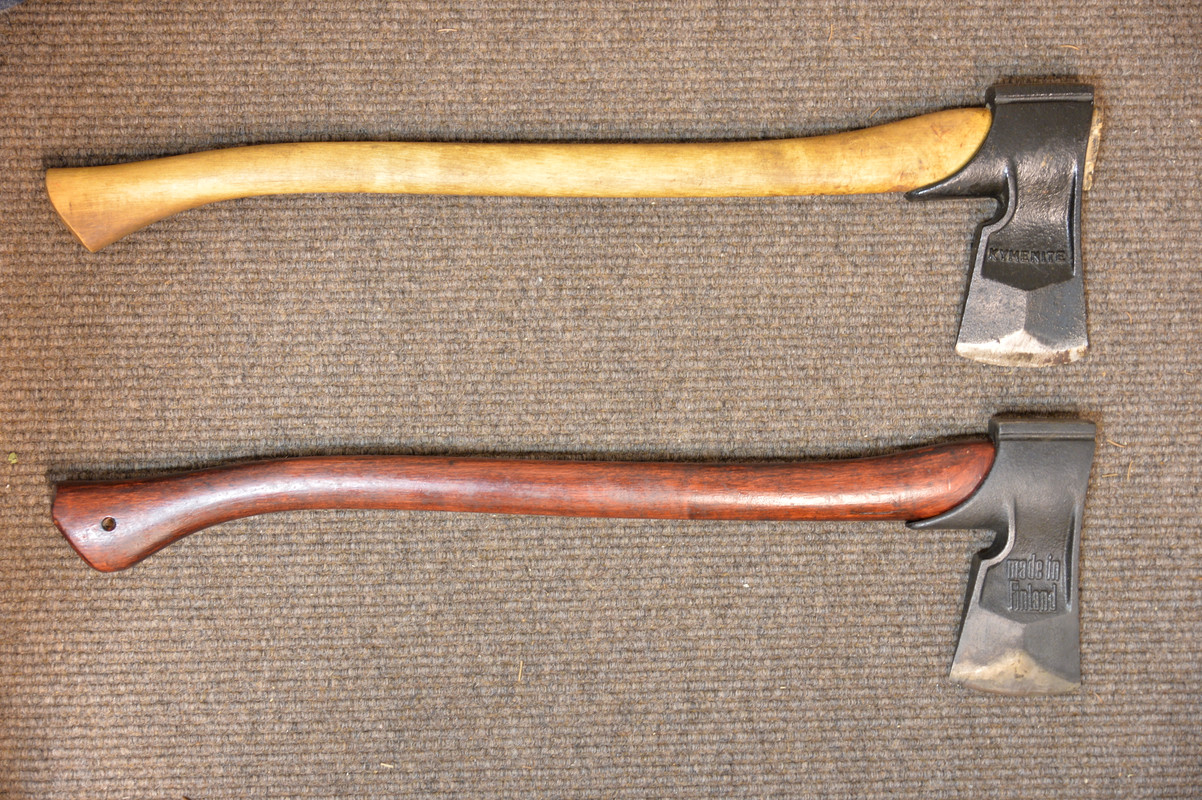Just so you know: Müller is from Carinthia, while Stubai Werkzeugindustrie reg.Gen.m.b.H. is from the Stubai Valley in Tyrol. I have some Axes from them aswell, very good Quality aswell just not as good as from Müller since Stubai makes alot more different Tools aswell while Müller is more focused on Forestry tools. (Stubai Blades are a bit thicker)
The thin blades are the optimal form for Debranching and pruning. The wide cutting edges i dont want to miss aswell, it is so much easier to hit Branches and not your handle. (A thing mentioned aswell in 1959 about swedish axes, seems they did not learn half a century later...)
And the refiling is also faster because the blade stays thin for a longer distance.
I find that with the "D" shaped eye i can make rehandling easier and faster, i had a more difficult time with the oval (not symetrical=different radius on front curve) eye on my Prandi axe.
I would get a Biber "broad" its 10 or 30 mm wider than the normal Biber, a few 10s of mm are the difference between a blade hit or a handle hit when a bad strike is made. I would get a light version, max 1200 g.
For debranching of Leafwood over 1,0 fm (m³), a mass of 1250 g was recommended in 1959. Under 1,0 m³ its 800-1000 g.
Müller told me by email that the difference between the Biber (Light blue) and the Classic (forge finish) is in the steel quality and finer grinding.
The thin blades are the optimal form for Debranching and pruning. The wide cutting edges i dont want to miss aswell, it is so much easier to hit Branches and not your handle. (A thing mentioned aswell in 1959 about swedish axes, seems they did not learn half a century later...)
And the refiling is also faster because the blade stays thin for a longer distance.
I find that with the "D" shaped eye i can make rehandling easier and faster, i had a more difficult time with the oval (not symetrical=different radius on front curve) eye on my Prandi axe.
I would get a Biber "broad" its 10 or 30 mm wider than the normal Biber, a few 10s of mm are the difference between a blade hit or a handle hit when a bad strike is made. I would get a light version, max 1200 g.
For debranching of Leafwood over 1,0 fm (m³), a mass of 1250 g was recommended in 1959. Under 1,0 m³ its 800-1000 g.
Müller told me by email that the difference between the Biber (Light blue) and the Classic (forge finish) is in the steel quality and finer grinding.


